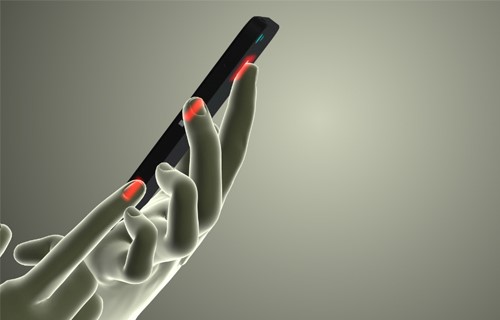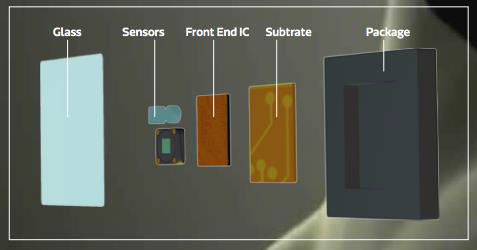By Richard Quinnell, editor-in-chief

We have gotten used to fitness-monitoring wristbands measuring our heart rate and such, but a new generation of personal health monitors is on the horizon. These new monitors won’t be worn on the wrist; they’ll be an integral part of our smartphones. At the heart of this new capability is the Sensio biosensor from MediaTek.
Personal health monitoring is a growing market that Grand View Research has estimated to be as great as $612 billion by 2024. Even now, NPD estimates that one in 10 U.S. adults owns a fitness monitor (although no word on how many have migrated to the back of the dresser drawer). The need for yet another device, however, has slowed market adoption.
Enter the Sensio biosensor module from MediaTek. This six-in-one system aims at bringing next-generation health monitoring to the device that most of us will be sure to have — a smartphone. Using a combination of red and infrared LEDs and optical sensors along with sensitive electrical sensors, the Sensio can provide users with heart rate, heart rate variability, blood volume variability (PPC), blood pressure trends, blood oxygen saturation (SpO2 ), and an ECG. All the user needs to do is hold their phone and touch the optical sensor for 60 seconds. No other equipment is needed.

One key to the sensor’s operation is the way in which the user touches it. As the diagram above shows, there are three points of contact between the user and the sensor. The first contact point is the user’s finger pad on the optical sensor, located on the back of the smartphone. A second contact point has another finger of the same hand touching an electrical pad or stud. The third contact point involves a finger from the other hand touching a second pad.
The optical sensor projects both red and infrared light into the first fingertip while light sensors record how much of each wavelength gets returned. With processing to measure variations and correlate them with heartbeat, this wavelength-dependent reflectivity yields blood flow, blood pressure, and oxygen saturation. Two hands touching the electrical pads form a circuit loop that includes the heart, allowing the sensor to monitor its electrical activity to yield the ECG, from which the on-chip signal processor can determine heart rate and its variability.
MediaTek is careful to point out that the sensor does not yield medical-grade results, so it cannot be used for diagnostic or treatment purposes. But it can provide information such as trends and help identify areas of concern. In addition, the sensor allows the entry of calibration data based on professional equipment readings to increase the accuracy of results.
The sensors are currently sampling and will be available for production in early 2018, according to MediaTek. The company also expects the first smartphones equipped with the sensor to enter the market in March 2018. If this feature catches on with smartphone manufacturers, then users will have a fitness monitor available to them that will likely never get relegated to the back of the dresser drawer.
Advertisement
Learn more about Electronic Products Magazine





